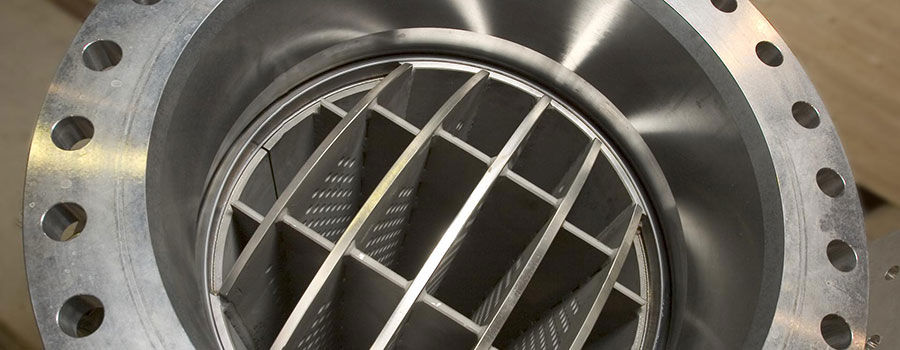One of our best-known flow control brands, Q-BALL™, has its roots in 1978 when a French “valve expert” Roger Bey presented his low noise and anti-cavitation solution developed for the ball valve to Antti Nelimarkka, the founder of Neles company (now Valmet's flow control business line). Q-BALL was the very first brand in famous Q-Trim™ technology aiming to reduce noise in control valves.
The core of this innovation is an insert with three perforated plates installed inside the ball. When opening the valve, the flow passes through three perforated plates, causing the pressure difference to be reduced in several steps and the flow velocity, which is the main reason for the noise, to be lower than in a standard ball valve. The invention raised a lot of interest. Neles patented it, and Bey was initially hired as a sales manager for the French region.
Neles started an R&D project to implement invention in metal-seated ball valves and hired Esko Yli-Koski1 to lead the project. As a result of the R&D project, Neles was the first valve manufacturer to offer a low noise and anti-cavitation solution patented for quarter turn valves in the early 1980s.
Industrial valves have two operating principles: quarter turn movement, such as ball and butterfly valves, and linear movement, which is, for example, the operating principle of a globe valve. Of these, the globe valve was originally a traditional control valve in many industrial applications, and solutions for almost all control valve applications have been developed for it over time.
Becoming a serious control valve manufacturer
However, the globe valve is not suitable for example pulp stock flows in the pulp and paper industry, for those applications Neles metal-seated ball valve was originally developed. Selling a ball valve as a control valve to other industries like oil and gas requires the capability to handle higher pressure differences than in the pulp and paper industry. This causes more challenges from noise due to high pressure difference and how to prevent it cost-effectively.

Q-BALL – a perfect solution to remove cavitation
Q-BALL was a perfect solution for this and the final seal for the fact, that Neles was to become a serious control valve manufacturer.
Q-BALL was a perfect solution for this and the final seal for the fact, that Neles was to become a serious control valve manufacturer. The flow laboratory of the Helsinki factory has a test rig that presents cavitation as a phenomenon, which can well illustrate Q-BALL's ability to remove cavitation in liquid flow. This cavitation demo is always worth of showing for customers, just like in 1982 when a representative from major global energy company saw the demo and decided immediately to order Q-BALL valve.
Q-Trim technology was then applied for segment valves late 1980’s and later for the Finetrol control valve in the early 1990s. At the same time Neles developed S-Disc for butterfly valves.
Performance improvements
Further studies of noise as a phenomenon and monitoring markets more closely showed that the noise abatement inside the valve cannot adequately dampen the highest noise levels. There was a need to develop noise abatement solutions, such as diffusers and A-plates, to be installed after the valve in a pipeline.
Testing and developing these capabilities as part of the Nelprof™ valve sizing program was a work to be done in the early 1990s. In 1991 we further developed Q-BALL technology for big ball valves and verified performance with DN600 ball valve in large scale flow laboratory in France
At the turn of the 2010s, we decided to rise to the next level in valve noise abatement. Even then, Yli-Koski was heavily involved in basic research and in creating a deep understanding of aerodynamic noise. It was known that when the flow velocity exceeds the speed of sound the noise is mostly generated by the so-called shock waves, the significance of which had not previously been sufficiently valued. The study concluded that shock wave control could be a means for better noise abatement than the original Q-trim technology. This was demonstrated by measurements and the next generation of technology Q2 and products based on it emerged. The effectiveness of noise abatement was found as a result of systematic research.
Safety brings success
For the customer, noise in process plants is an occupational safety issue, and it is often also an environmental issue when the plants are located near the settlements. In addition, cavitation of liquid flows can cause wearing through the cavitation erosion in various parts of the valve. Q-Trim technology and the products based on it are innovations that have been developed by listening to our customers and understanding their challenges. Their success and customer results speak for themselves.
Reference:
1) Jouko Koskinen: Neles, Nelimarkan oivalluksista maailmanmaineeseen, 2003
The text has been updated in April 2022, due to the company name change to Valmet.


